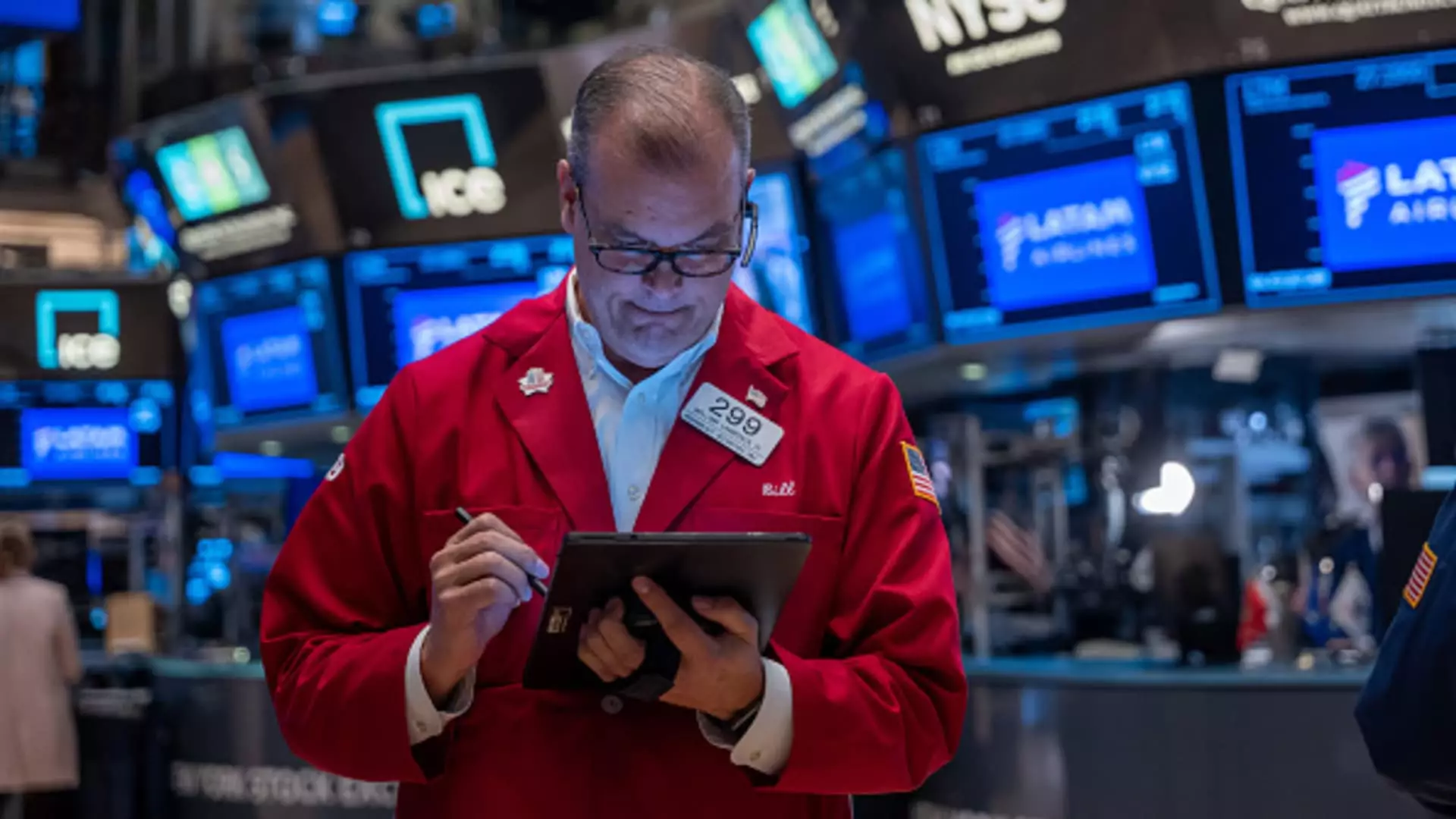The stock market reflects the collective sentiment and behavior of traders and investors, making it a barometer for economic conditions. Recently, notable shifts in stock prices and bond yields have garnered attention as trading sessions come to a close. This article aims to dissect the latest happenings in the market, look ahead at anticipated earnings reports, and explore the implications of these developments.
As the trading day wrapped up, both the Dow Jones Industrial Average and the S&P 500 indices faced decline for a second consecutive day. Such fluctuations can be indicative of various foundational issues in the economy or may represent market corrections following previous highs. Notably, a rise in the benchmark 10-year Treasury yield, which surged past 4.2%, signals a shift in investor expectations, possibly thriving on inflationary pressures or tightening monetary policies. Such developments influence not only equities but also other asset classes, as a higher yield often redirects investor focus towards treasuries as a safer investment.
The heightened interest in the 10-year Treasury yield over other tickers emphasizes a growing concern among traders. The two-year Treasury yield clocked in at 4.03%, with short-term bills showing even higher yields—4.78% for the one-month yield. This inclination towards short-duration bonds as preferred investments is vital for strategic asset allocation, particularly for risk-averse investors in a climate marked by volatility.
Looking ahead, several major corporations are set to report their quarterly earnings, each with its own narrative contributing to the broader market picture. Starbucks stands out by witnessing a significant drop of 4% in extended trading hours. Their decision to suspend guidance for fiscal 2025 due to declining same-store sales sends ripples through investor circles, indicating potential trouble ahead. On a more supportive note, Starbucks has chosen to boost its dividend significantly, striving to maintain shareholder interest, even amid unsettling sales trends.
In another sector, McDonald’s faces scrutiny following a CDC report linking the company to 49 E. coli cases. Their stock price plummeted by about 6% in after-hours trading. The immediate correlation here reflects consumer confidence, as previous outbreaks have had lasting impacts, notably seen in Chipotle’s stock during its E. coli crisis years ago. The fast-food giant’s prompt response—halting the use of certain ingredients—illustrates the delicate balance companies must strike between operational continuity and public health responsibility.
On the technological front, the performance of established companies like Boeing and IBM continues to capture attention. Boeing achieved a 5% increase over the past week even amidst union negotiations, which could directly impact workforce morale and operational efficacy. In contrast, the stock still lies 40% below its 52-week highs, inciting discussions about long-term recovery strategies following the challenging market conditions that the aerospace sector has endured.
Conversely, Coca-Cola, gearing up for earnings disclosure, has maintained a positive trajectory with a 7% uptick over the past three months. Its stock remains a mere 5.5% away from the high it reached in September. This durability could indicate robust demand and brand strength within the consumer staples sector, which often weathered downturns effectively.
The much-anticipated reports from firms like Tesla and various industrial companies underline the mixed signals pervading the market. Rising inflation concerns paired with shifting consumer behaviors place imperative pressure on strategic operations and forecasting models. For instance, Tesla, with a 13% reduction in stock value over three months, faces uphill challenges as competition grows and market dynamics shift.
Additionally, the telecommunications giant AT&T boasts a notable gain, up approximately 16% over the past three months. It illustrates the contrasting journey sectors can take within the same economic climate, emphasizing the necessity for investors to consider sector-specific factors when evaluating investment opportunities.
As we brace ourselves for forthcoming earnings reports, the market appears to be standing at a crossroads, reflecting uncertainty and anticipation. With a blend of declining stock prices, fluctuating yields, and challenging external market conditions, investors must remain vigilant, adopting adaptive strategies that consider both immediate and long-lasting ramifications of these evolving circumstances. A keen eye on sector-specific developments, along with broader economic indicators, will be necessary for navigating this increasingly intricate financial landscape.

